K-POP: A New Force in Pop Music | K-Drama: A New TV Genre with Global Appeal | The KOREAN WAVE |
0 Comments
Un completo curso del idioma coreano, paso a paso, listo para seguir desde internet. Es gratuito, no requiere registro alguno y 100% en español.
http://coreano101.bravepages.com/ PALABAS BÁSICAS
Hola : annyong hashimnigga (formal) Adiós: (para cuando se va alguien) annyonghi kaseyo Adiós: annyonghi kyeseyo Por favor: put’ak hamnida Gracias : kamsa hamnida Días de la semana Lunes: wol-yo-il Martes : hwa-yo-il Miércoles : su-yo-il Jueves : mok-yo-il Viernes : keum-yo-il Sábado : to-yo-il Domingo : il-yo-il Meses Enero : il-wol Febrero : i-wol Marzo : sam-wol Abril : sa-wol Mayo : o-wol Junio : yuk-wol Julio : chil-wol Agosto : pal-wol Septiembre : gu-wol Octubre : sip-wol Noviembre : sip-il-wol Diciembre : sip-i-wol Direcciones Izquierda : wen-chok Derecho : o-reun-chok Recto : ddok-ba-ro Arriba : wi-ro Abajo : a-re-ro Lejos : meon Cerca : ga-ka-un Lejos : gin Corto : chal-beun Mapa : ji-do Oficina turística: gwan-gang an-ne-so Aquí: yyog-ee Allí: chog-ee Familia Esposa : a-nae Esposo : nam-pyeon Hija : ttal Hijo: adeul Madre : omma (si eres un niño), o-mmo-ni (si eres un adulto) Padre : oppa (si eres un niño), o-bo-ji ( si eres un adulto) Amigo : chin-gu Colores Rojo: ppalgang Azul: parang Amarillo: norang Blanco: hayang Negro: geomjeong Transporte Aeropuerto : konghang Terminal de autobuses exprés: kosok bosu t’ominol Parada de autobuses: bosu chongnyujang Travesías en ferry: naru Embarcadero de ferry: pudu Estación de metro: chihach’ol yok Estación de metro: kich’a yok Autobús: bosu Taxi: t’aekshi Tren: kich’a Sólo ida: p’yondo Vuelta: wangbok Pasaporte: yogwan En la ciudad Oficina de correos: uch’eguk Sello: u’p’uo Teléfono público: gongjung chonhwa Tarjeta de teléfono: chonhwa k’adu Banco: unhaeng Farmacia: yakkuk Servicios, baño: hwajangshil Hospital: pyongwon Acomodación Hotel: hot’el Casa de huéspedes: yogwan Habitación individual: shinggul Habitación doble: tobul lum Con baño privado: yokshil innun bang Toalla: sugon Comida Noodles, tallarines: myon/kuksu Arroz: bap Pescado: saengson Carne de vacuno: sogogi Pollo: takkogi Cerdo: taejigogi Alubias: k’yong Pimienta negra: huch’u Sal: sogum Mantequilla: pot’o Ketchup: k’ech’op Azúcar: solt’ang Agua (fría): ch’an mul Té: ch’a Café: kop’i Zumo: chyusu Leche: uyu Cerveza: maekchu Este curso lo podes estudiar y ver online, pero para que sea más práctico y para escucharlo en tu Mp3 o Ipod también lo pueden descargar.
La página donde lo puedes ver online es: http://world.kbs.co.kr/ Descarga: MIRROR1: 01: http://www.megaupload.com/?d=JDW7QMZG 02: http://www.megaupload.com/?d=ZWL93YWY 03: http://www.megaupload.com/?d=P53DXT24 04: http://www.megaupload.com/?d=4HDBMONM 05: http://www.megaupload.com/?d=JMLCRA0M 06: http://www.megaupload.com/?d=J3V4GGWY 07: http://www.megaupload.com/?d=3ZP2SJ7D MIRROR2: 01: http://rapidshare.com/files/25654810...KorI.part1.rar 02: http://rapidshare.com/files/25654811...KorI.part2.rar 03: http://rapidshare.com/files/25656265...KorI.part3.rar 04: http://rapidshare.com/files/25656265...KorI.part4.rar 05: http://rapidshare.com/files/25657762...KorI.part5.rar 06: http://rapidshare.com/files/25657762...KorI.part6.rar 07: http://rapidshare.com/files/25658674...KorI.part7.rar The Chaoxian ethnic group (also written as 'Korean'), with a total population of 1,923,842 according to the census taken in 2000, is scattered mainly in Heilongjiang, Jilin and Liaoning Provinces. Smaller populations of Chaoxian people live in other areas in the Inner Mongolian Autonomous Region, Beijing, Xi'an and other cities. Members of this minority living in the Yanbian Korean Autonomous Perfecture in Jilin Province speak and write in Korean while those living in other parts of China usually speak Chinese.The ancestors of the present Chaoxian people were immigrants from the Korean Peninsula. When they settled in China they gradually formed unique customs and evolved into a Chinese ethnic group. In the national census of 1982, it was found that the Chaoxian had been living in the Northeast region of China from as early as the Ming and Qing Dynasties. http://www.megaupload.com/?d=KK2MS4Q7
Este blog te da todas las heramientas para aprender el idioma coreano con facilidad. Ademas este blog esta en idioma español el cual te hace mas facil entender el contenido del mismo. Este tambien cuenta con una pagina en youtube donde encontraras videos útiles para tu educacion en el idioma.
|
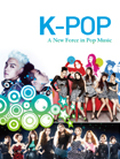


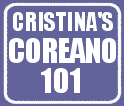
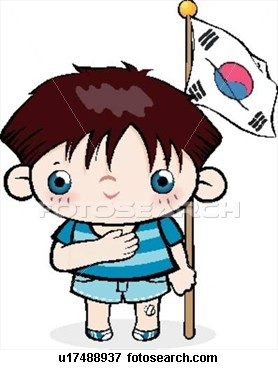
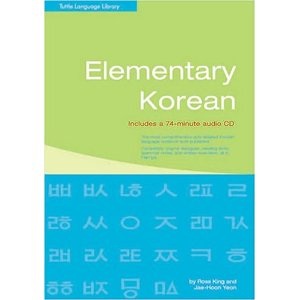


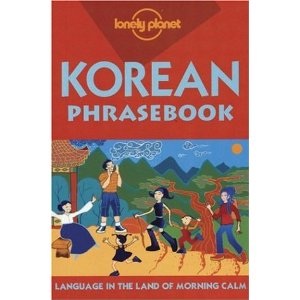

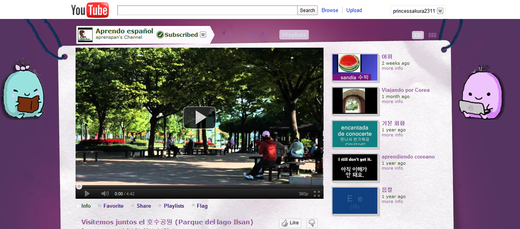
 RSS Feed
RSS Feed